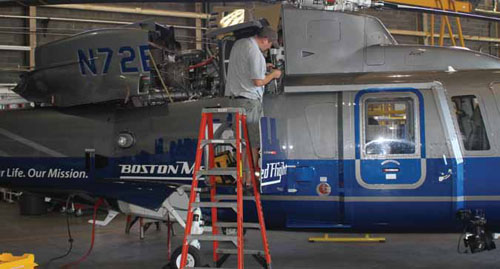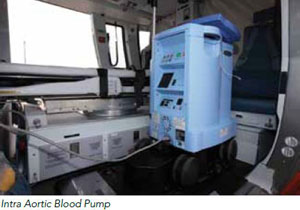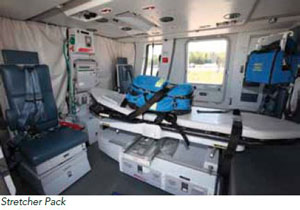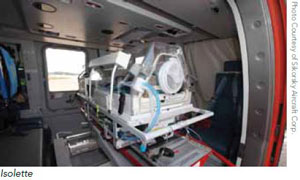
Your Life Our Mission - Boston MedFlight


Twenty six years in critical care transport is what Boston MedFlight is all about. Boston MedFlight (BMF) is a Commission on Accreditation of Medical Transport Systems (CAMTS) Critical Care Transport service. BMF’s mission is to extend the tertiary care services of the major Boston hospitals to the citizens of Massachusetts and New England. Boston MedFlight commits to excellence in critical care transport by providing the highest quality regional critical care transport system 24/7. As a non-profit organization, BMF transports patients regardless of their ability to pay.
Boston MedFlight is financially supported in part by a consortium of Boston hospitals including Beth Israel Deaconess Medical Center, Boston Medical Center, Brigham and Women’s Hospital, Children’s Hospital Boston, Massachusetts General Hospital and Tufts Medical Center. Since 1985, Boston MedFlight has played an integral role as part of the Massachusetts EMS system and the community hospitals of New England. The helicopters are owned by Boston MedFlight and managed and operated by Era Helicopters LLC, a Seacor Company.


The following interview is with Edward Jerin, aviation maintenance supervisor for Boston MedFlight.
HeliMx: How many different bases do you operate out of?
Ed: Currently the helicopters operate out of two bases in Massachusetts: Hanscom Air Force Base in Bedford and Plymouth Municipal Airport in Carver.
HeliMx: How many helicopters do you operate and what type are they?
Ed: We currently have three helicopters in operation, one Sikorsky S-76 C++ and two American Eurocopter BK-117 C1s.
HeliMx: What special EMS equipment do you carry and how does that equipment impact maintenance procedures?
Ed: We carry just about everything that you would find on a vehicular ambulance: cardiac monitors/defibrillators and mechanical ventilators utilizing liquid oxygen systems, Intra Aortic Balloon Pumps and isolettes. This medical equipment is not governed under any STC, ICA or maintenance procedure if it’s listed as loose equipment. The only time the equipment impacts maintenance is if the equipment has mounting provisions that is fixed to interior panels or airframe structure and is part of the interior STC.


HeliMx: What is Boston MedFlight’s mission statement?
Ed: Your Life — Our Mission. Boston MedFlight is committed to excellence in critical care transport by providing the highest quality regional critical care transport system.
HeliMx: How many personnel are in your maintenance department by job description?
Ed: We currently have four A&P mechanics, one A&P/IA lead mechanic and one A&P/IA supervisor.
HeliMx: How many maintenance shifts do you operate?
Ed: We are a 24/7 organization. Primarily we work one shift and then provide coverage via pager any hour where there is no mechanic in the building.
HeliMx: In a typical 30-day period, how many and what type of inspections do you normally perform?
Ed: We maintain our fleet under FAR Part 135, part 135.419 F, Aircraft Approved Inspection Program (AAIP), which is designed to minimize down time. Generally speaking, all inspections are calendar driven by utilization of flight hours and cycles on average per day.
HeliMx: What maintenance tasks are outsourced to an MRO or back to the OEM, and why?
Ed: Here at Boston MedFlight, we try and do everything in house as long as it’s within our expertise and the Part 135 certificates specifications. We do outsource some items like Turbomeca engine module changes. Since this is not required often, it’s more cost-effective for us to outsource this task to the OEM or MRO to do the job, as they have the tooling and are more familiar with the job at hand.
HeliMx: From start to finish, what is your procedure for doing a maintenance repair or inspection?
Ed: The first approach to any maintenance repair or inspection is to assign the work to be accomplished to the maintenance specialist in accordance with procedures, policies and specifications set forth in the appropriate manufacturer’s maintenance manuals, and with provisions of the FARs. Once that is defined, it’s the certificate holder’s responsibility to follow up and complete the work by signing, recording and assuming responsibility for all the work they have performed.
HeliMx: Of all the maintenance tasks that you perform, which have you found to be the most labor intensive and time consuming?
Ed: For us, the most labor intensive and time consuming tasks comes with our territory. If we break down on a hospital roof top, parking lot or an obscure landing zone due to scene calls, that usually costs us the most in time and labor. Planning, scheduling and organizing these types of calls can be a challenge and sometimes very difficult. Your resources generally are minimized drastically by location.
HeliMx: Do you have any lessons learned or tips you can share with our readers on a particular task that you found can improve on the maintenance process in the way of saving time, cost, materials, etc?
Ed: Maintaining a clean, safe and orderly work area to include personnel and shop equipment comes with benefits. If you are organized and have all the right tooling and personnel support in place, this pays itself back tenfold. Knowing everyone’s strengths and weaknesses helps your team achieve optimum performance. Don’t be afraid to approach upper management to get what you need for your shop. Take the time to budget the items you need and you will see improvement in everyone’s performance.
HeliMx: Who performs pre-flight and post-flight inspections on the aircraft?
Ed: Pilots generally do the pre-flights and maintenance performs the post-flights.
HeliMx: Who has the responsibility for assigning aircraft to flight operations?
Ed: Our Chief Pilot generally sets aircraft assignments by shift coverage. We run two ships on 24-hour shifts. The Bedford base has one 24-hour ship from 7 a.m. to 7 p.m., which we refer to as Day (D) 7/Night (N) 7. Then a second pilot comes in and covers from 7 p.m. to 7 a.m. We also have a 12-hour ship from 10 a.m. to 10 p.m. that we refer to as D10/N10. Our second 24-hour ship operates out of Plymouth, Mass. It is a 9 a.m. to 9 p.m. D9/N9 first shift, and then a second pilot comes in and covers the 9 p.m. to 9 a.m. N9/D9 shift. Maintenance, however, can make adjustments as needed for aircraft on ground (AOG). If scheduled maintenance is needed, maintenance would work out a schedule with operations and move aircraft and crews accordingly.
HeliMx: Who assigns the maintenance tasks to be done each day?
Ed: The lead technician sets work assignments daily.
HeliMx: Describe what takes place during a typical day in the life of the maintenance department.
Ed: Our day begins with a morning debrief with the off-going pilot group to see if there is anything to be reported. Then we start post-flight inspections following our set procedures, i.e., check liquid oxygen (LOX) bottle quantity, oil levels, lights, wash aircraft, fuel samples, etc. Once the post-flight is done, we verify the due list to check the upcoming maintenance schedule and release the helicopter for service. The maintenance team has collateral duties that include tech pub revisions, parts inventory, hazardous waste disposal, shelf life limits monthly checks, calibration, and fuel and oil analysis. All of the team members order, ship and organize parts as they come in or go out. The lead tech and I monitor upcoming inspections and plan accordingly. I sit down with the customer and operations once a week to go over any upcoming events.
HeliMx: Has Boston MedFlight started any initiatives regarding the push towards SMS?
Ed: We use an electronic “debriefing” system that makes notifications to responsible individuals. We are currently working on a similar system that will enable and track loop closure. We also utilize Era Helicopters AQD reporting procedures.
 Jerin joined Era Med LLC in 2008 as the Aviation Maintenance Manager for its Boston Med Flight critical care transport service contract. He is also on the HeliMx editorial advisory board.
Jerin joined Era Med LLC in 2008 as the Aviation Maintenance Manager for its Boston Med Flight critical care transport service contract. He is also on the HeliMx editorial advisory board.
